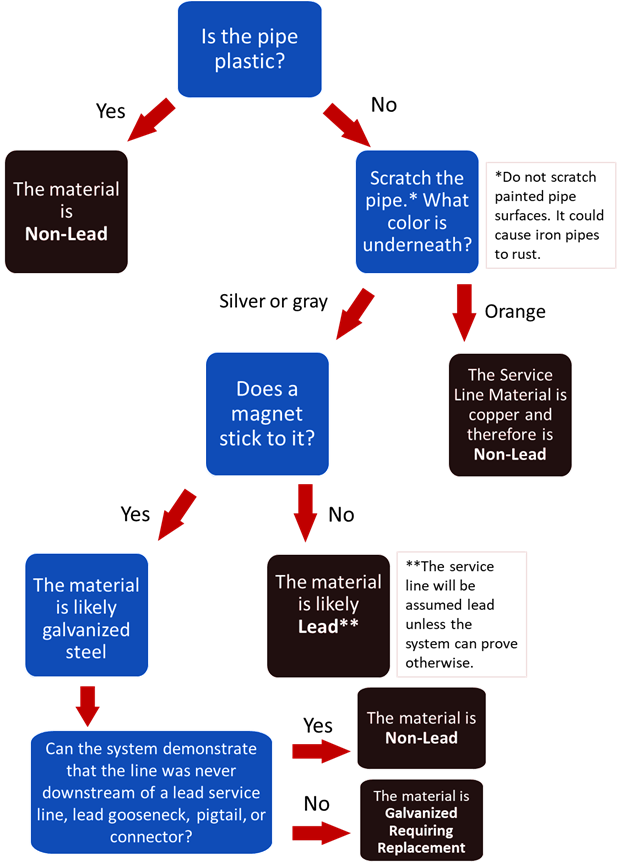Drinking Water Protection
- Drinking Water Protection Home
- About Us
- A-Z Index of Contaminants in Water
- Community Public Water Supply
- Drinking Water Institute
- Drinking Water Revolving Fund
- Noncommunity Public Water Supply
- Source Water Protection
- Water Operator and Certification Training
- DWP Contacts
Related Topics
- Annual Reports
- Drinking Water Risk Communication Toolkit
- Factsheets
- Fluoridation Rule Revision
- Forms
- Invisible Heroes Videos: Minnesota's Drinking Water Providers
- Noncom Notes Newsletter
- Sample Collection Procedures (videos, pictures, written instructions)
- Waterline Newsletter
Related Sites
- 10 States Standards
- Clean Water Fund
- Health Risk Assessment – Guidance Values and Standards for Water
- Minnesota Well Index
- Water and Health
- Wells and Borings
Environmental Health Division
Noncommunity Service Line Material Inventory
For Nontransient Noncommunity Public Water Systems

Under the Lead and Copper Rule Revisions (LCRR), nontransient public water systems (PWSs) are required to identify the materials of all service lines in the system and submit that information to the state. The completed inventories must then be made available to their consumers. For the purposes of developing a service line inventory, the definition of a service line is:
"Any pipe that enters a building and conveys water to the building plumbing fixtures."
Note that this definition includes not only water service lines that carry potable water from a well or surface water intake into a building, but also water service lines that carry potable water into other buildings on the same distribution system.
The LCRR require that complete service line inventories for all nontransient PWSs be submitted to MDH by October 16, 2024. The goal of the inventory is to identify service lines made of lead, or galvanized service lines that are downstream of lead plumbing and that may contain lead scale on their interiors. The galvanized lines that may have been downstream of lead are labeled as “galvanized requiring replacement”. One of the primary goals of the LCRR is to permanently remove sources of lead in PWSs throughout the country. Note that lead service line replacement is not necessarily required if lead lines are discovered at your system. Lead service line replacement will be considered after follow-up investigations confirm that a potential public health risk exists.
- Gather historical records that indicate service line materials.
- Records may include distribution system maps and drawings, construction records, or capital improvement plans if the original water service line was ever modified. If these documents are available, record the service line name with a unique description and the service line material in the rows of the form on page 3. If the service line is made of galvanized steel, note if it was ever downstream of a lead pipe, gooseneck, pigtail, or connector.
- If no historical records are available, visually inspect the service line.
- First, locate where the service line enters the building. Using a key and small magnet, follow the Service Line Material Identification Flowchart on the next page of this document. Record the service line name with a unique description and the service line material in the rows of the form on page 3 based on the results of the visual inspection test.
- Please keep the completed Service Line Material Data Form on-site and provide to your MDH sanitarian during a 2023 site visit.
- Your sanitarian will collect the Service Line Material Data Form during a 2023 site visit. If you need help developing your inventory, your sanitarian can assist you.
- Compliance staff will review the Service Line Material Data Form for completeness and send you a Service Line Material Posting Notice and a Certification Form. Details describing how to distribute the posting notice, timeframe, and certification will be contained within the correspondence.